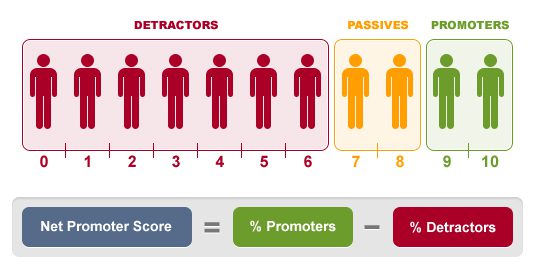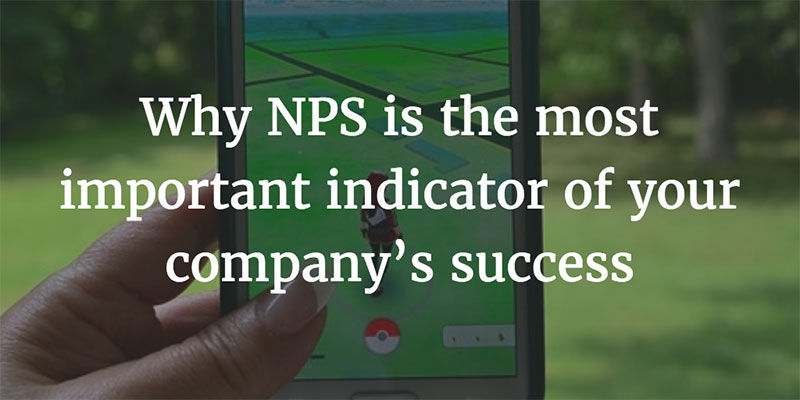There’s a Cubone on my desk.
If you’re sick to death of hearing about Pokémon, skip to the first subhead below. From then on it’s all enterprise tech shop talk. But if you can stand to hear a bit more, I promise this story ties into NPS.
Anyway, yes, I’m playing Pokémon Go at work (sorry, boss) and I’m trying to catch this Cubone. I toss the pokéball and… nothing. The game freezes and a red error message pops up. I frantically reboot the game. I’ve got seconds left on my incense and I’ve caught nothing but Pidgeys and Zubats all day. I want this Cubone real bad, but it’s gone forever.
Pokémon Go is the hottest fad in the country right now. It’s already passed Twitter in terms of daily active users, and it’s also ahead of Facebook in terms of engagement. It’s a massive success, adding almost $11 billion to Nintendo’s stock value in one week. But it kinda sucks.
I downloaded the game on the second day it came out, and I actually managed to play it for about two minutes in between constant crashes. The next few days were a bit more functional, but still frustratingly glitchy. Unfortunately, the game isn’t really that fun when I press pause to think about it. Pokémon battles are a chaotic mess of random tapping and swiping, there’s no in-game guidance for how to play, and I hate the “freemium” business model on principle.
But here I am with the Cubone on my desk and I can’t stop playing. Why? It’s pretty simple: I love Pokémon. In 1998 I was 12 years old and nerdy. There was probably a picture of me in Nintendo’s marketing strategy under “target audience.” A GameBoy Pocket and Pokémon Red were the only things on my Christmas list that year. 18 years later, the GameBoy, the cartridge, the trading cards, and the t-shirt are long gone, but the love is still there. I’m a Pokémon trainer again and I’m fully hooked. I’ve been trying to get all my friends to join Team Instinct and take down some local gyms. If Niantic (the developer of Pokémon Go) were to send me an NPS survey, I’d be a 10.
If your company rolled out a highly-anticipated new app or feature and it was constantly crashing on a bad day and mediocre on a good day, would your customers stick around? Or would they drop you as fast as a CP10 Rattata?
What is NPS?
NPS: it stands for Net Promoter Score, and it first appeared in this article on the Harvard Business Review by Fred Reichfeld. If you’re not familiar at all with NPS, I highly recommend watching this webinar presented by our resident NPS genius Tracy Zundel. You can also read this Lincoln Murphy article for seven in-depth tips, tricks, and hacks for NPS methodology. Lastly, if you are having difficulty calculating NPS, visit the Gainsight NPS calculator.
To sum it up, it’s beautifully simple. You ask your customers how likely they would be on a scale of 0-10 to recommend your product to friends, family, or colleagues. People who answer 0-6 are detractors. People who answer 7 or 8 are neutral, and people who answer 9 or 10 are promoters. Subtract the percentage of detractors from the percentage of promoters and you have your NPS score — the higher the better.

Why NPS works
The limits of NPS have been written about at length (as have the merits) but the bottom line is that research shows NPS correlates very strongly to the growth of your business. There are four main reasons for that:
Promoters renew
What happens if you work for a recurring revenue business and your revenues don’t recur? Your company fails. Whether your clients renew on a monthly or yearly basis or some other schedule altogether, clients who answered 9 or 10 on this one question are much more likely to be repeat buyers. Customer Success is often referred to as a way to “close the funnel.” In other words, by locking in renewals, you can provide your company with a very strong foundation for growth.
Promoters expand
As you grow, you need your customers to grow alongside you. That means buying more licenses, adding new features, and increasing their integration with your product. Promoters are much, much more likely to do that based on statistical research. This is especially important if you have a large footprint in your total available market. Depending on how your company tiers its offerings, customer expansion could become one of the leading drivers of growth — especially because the cost to acquire a new customer is typically much higher than the cost to upsell or cross-sell an existing customer.
Promoters forgive
As a promoter of Pokémon Go, I’m bafflingly understanding of the semi-botched rollout of the game. I get that the servers weren’t ready for the massive number of players. I’m holding out hope that the features I really want in the game are coming out soon. Why would I put up with this? Pokémon as a brand has been building up goodwill with me for 18 years now. I’m tremendously nostalgic for the old days of discovering new Pokémon on my GameBoy and trading the cards with my friends around the middle school lunch table. Have you been building up goodwill with your customers by delivering positive outcomes, stellar customer service, and meeting, then exceeding their expectations? It’s only a matter of time before your company makes a mistake. Whether you survive and recover is largely dependent on the relationships you’ve built with your clients over months and years.
Promoters… promote
As someone who works in marketing, I can tell you that organic word-of-mouth is like our Holy Grail. The best strategies we can come up with for generating interest in our product will never, ever be a match for someone you trust telling you they like and use Gainsight. The beauty of Customer Success is that word-of-mouth doesn’t have to be a lucky accident anymore. You can operationalize customer advocacy. We teamed up with Influitive to write an e-book that goes in-depth on how to activate your customers and turn them into advocates. For example, it will show you how to create triggers for advocacy requests based on key usage milestones. This is an important read for anyone interested in mobilizing your customers to do your marketing for you.
It’s a testament to how multi-dimensional NPS is that its namesake — promotion — is almost like the cherry on top of the sundae. That’s the beauty of NPS: instead of asking four questions or more to gain all this insight, it’s encapsulated in one simple survey question. Obviously, the biggest knock on it is that it’s not prescriptive. It can’t tell you why you have promoters or detractors. But the purpose of NPS is to give you a benchmark that’s highly indicative of the success of your customers and ultimately your company. If you don’t regularly track your NPS score and compare results over time, you’re ignoring one of the most critical metrics, especially for subscription businesses.
What is a good NPS Score?
So what’s a good NPS score to shoot for? Unfortunately, there’s no one-size-fits-all answer besides “positive.” Depending on your industry and your business model, just getting to the plus side could be job number one. It’s important to remember that the margin for being a promoter is much thinner than being a detractor. Two out of 11 numbers on the scale are reserved for promoters. Seven are for detractors. On top of that, people generally tend to be more vocal about their negative experiences than their positive ones. That said, if your NPS is under 20, it could be an indicator of a hard limit to your growth. Jason Lemkin has a very illuminating article on SaaStr about why some SaaS companies stall out at $20 million ARR — spoiler alert: it’s low NPS.
Here’s the bottom line: is your NPS score improving? If you’re conducting surveys regularly, you should see improving results. The biggest drawback to NPS is that it isn’t prescriptive. The score itself won’t tell you why it’s low or high, but it will tell you very broadly how well you’re doing in Customer Success. More importantly, it gives you a concrete goal: do whatever it takes to raise that score.
